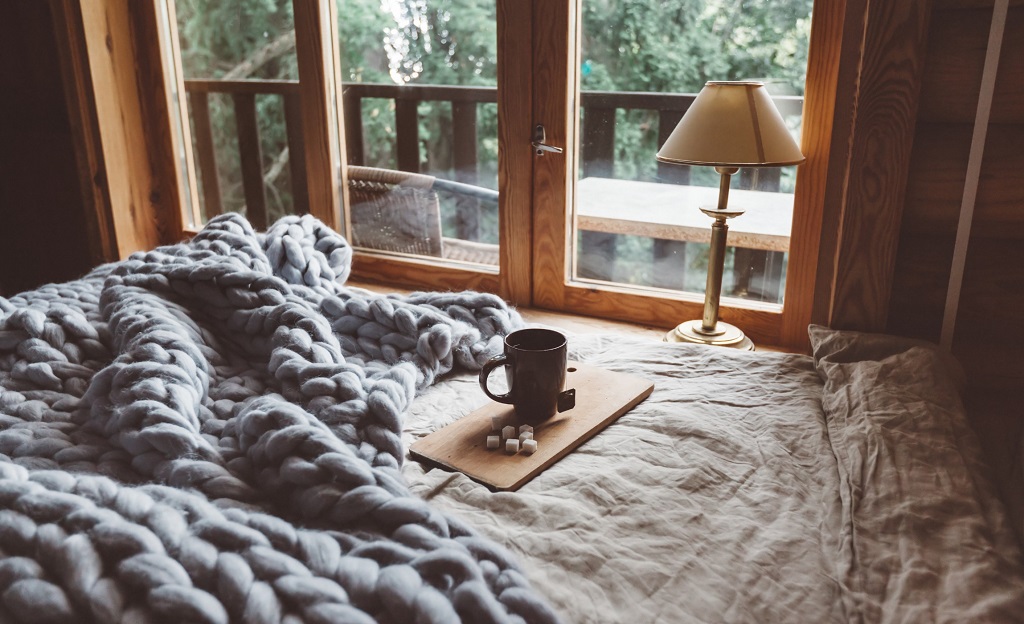The UK and the US have always been connected – we share the same language (albeit with some alterations), many of us have relatives on the other side of the pond, and many people in the US have a fixation on the quaint eccentricity of British culture and design.
While not all homes fit the countryside cottage aesthetic (AKA cottagecore), and not all university rooms look like the hallowed halls of Oxford or Cambridge, there is still plenty to love about British design.
In this article, we take a look at some of our favorite British interior design traits that can easily be applied to your home.
Table of Contents
- Why are Interior Design Styles of the US & UK so Different?
- 3 Interior Design Features of UK Homes We Love in the US
- UK vs. US Housing & Design Resources
- English Interior Design Books
Also see:
Why are Interior Design Styles of the US & UK so Different?
Typically, the US and the UK have quite different design styles. Most often, this is primarily due to space constraints – the majority of homes in the UK (around 80%), are semi-detached (AKA duplexes) or terraced (AKA townhomes), whereas nearly 85% of properties in the US are detached.
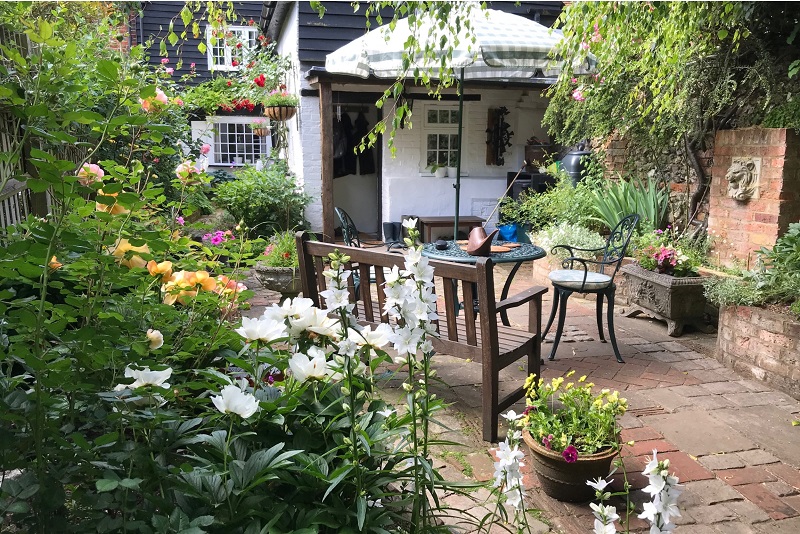
As a result, UK design focuses on making the most of the space you have, and creating multi-purpose spaces, such as having the washing machine in the kitchen – a feature that would be considered unusual for many Americans.
Also see:
3 Interior Design Features of UK Homes We Love in the US
Regardless of how different interior design styles may be between the US and UK, here are design traits that are prevalent throughout the UK that can make any residential interior more interesting, intimate and comfortable, no matter where you live:
1. Use What’s Already Been Used
Given that moving and relocation services can be quite costly, many people in the UK look to furnish their homes with quality vintage items, either handed down from family members or purchased at secondhand stores, or garage and yard sales.
This allows them to acquire stylish, long-lasting furniture at lower prices, as well as having a piece of history in their homes. As a result, many Brits have mismatching furniture all over the house, which creates a quirky, lived-in feel that remains popular. This tradition has led to a proliferation of truly unique interior spaces bursting with personality.
If you’re looking to emulate the British penchant for older furniture, you should read up on some tips for caring for it, so you can avoid accidentally ruining that classic wooden chair set you’ve just purchased.
This explorative approach to furnishing and decorating one’s home is also a creative method of having your interior spaces tell a story. The reasons you prefer a given piece of furniture or décor often reveal something about yourself that will make your home more interesting and intimate to family, friends and guests.
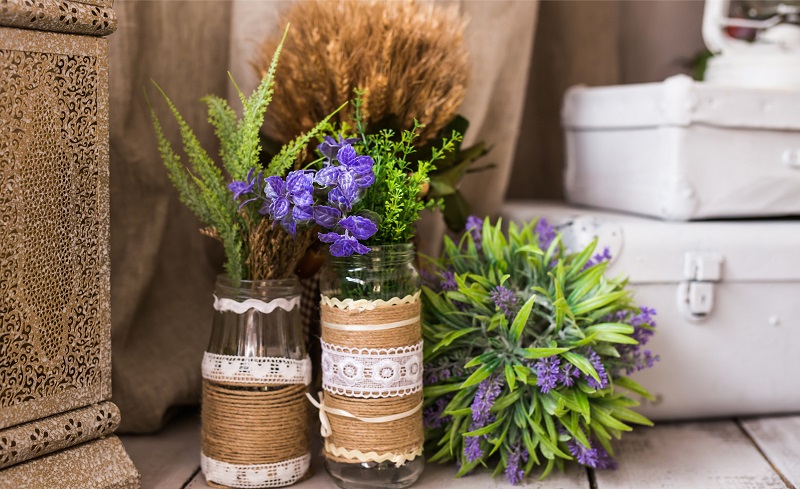
Here are two inspirational design approaches that share common themes that will increase your confidence to start experimenting with adding unique personality to your interior spaces:
- Cinematically Inspired Design
- This is the practice of applying design elements used in cinema set design to tell a story and set a mood quickly, in a timeless style
- The end goal of cinematically inspired design is to create a timeless design that represents one’s unique stories
- Set designers are storytellers at heart and are masters at making immediate emotional connections
- Eccentric Design & Décor
- Eccentricity as a style cannot be defined by a similar look
- Eccentric style is characterized by an approach that values a “life lived” rather than a “lifestyle”
- Eccentric interiors are about personality, authenticity, freedom, and individuality
- Eccentricity is timeless and unique
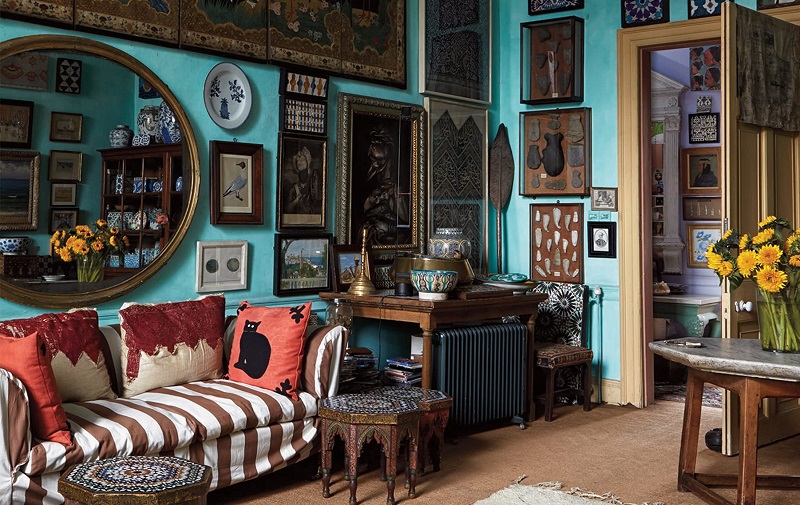
Image courtesy of Ros Byam Shaw (author) and Jan Baldwin (photographer). Closeup view of the book cover for English Eccentric.
2. Focus on Comfort
The English Countryside Aesthetic relies heavily on casual comfort – think squishy sofas with a cup of tea and a book, soft blankets to wrap up in after a windy walk, dog leads and wellies jumbled up together in the hallway.
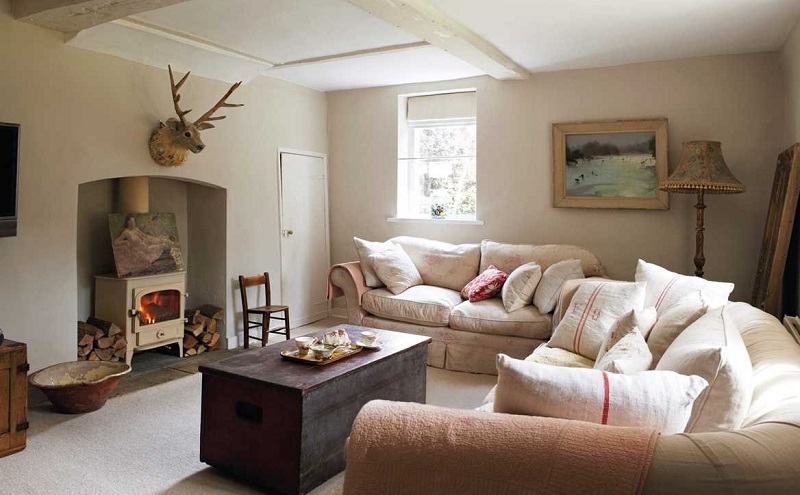
Image courtesy of Ros Byam Shaw (author) and Jan Baldwin (photographer) from the book Perfect English Farmhouse.
Again, none of this needs to match, but your primary focus should be on making your family and guests comfortable. For example, consider adding a basket full of blankets in the living room, cozy cushions on the sofa, and plush towels for those after-walk showers.
Similarly in the US, we like to designate areas within our homes that are so comforting and welcoming that you can lose yourself in that space for hours on end. These areas are quite specific for individuals, as they are about sensory impressions – light, heat, acoustics, touch, smell – all of which are very personal.
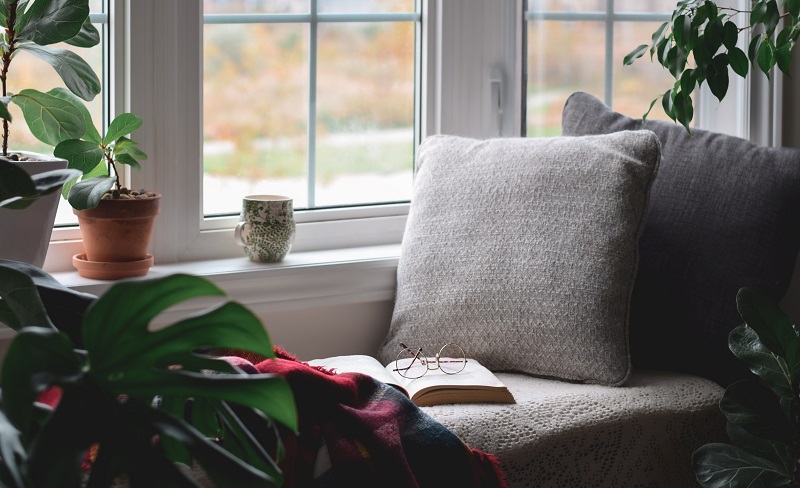
Choosing an area of your home to create an oasis of comfort for reading, writing, or just daydreaming is as easy as determining where you feel most relaxed and building your “nest” in that space. Add overstuffed chairs with ottomans, rolled arm accent chairs, with colors and patterns that are conducive to relaxation and serenity.
If sufficient space is an issue, small, portable, utilitarian items can help easily transform multifunctional spaces into more intimate, comfortable spaces. Here are examples of tremendously valuable items that can help you create a “comfort oasis” at a moment’s notice:
- Light, narrow side tables
- Trays for coffee, tea and appetizers, as well as media devices & reading materials
- Portable Bluetooth speakers
- Large, decorative baskets to hold blankets and pillows
- Small, light ottomans or footstools
- A long power strip with ample sockets
- Portable lighting device
- A set of side tables that can also store blankets and pillows
Also see:
3. Leverage Cohesive Layering
American design favors large, open spaces – but as we’ve already mentioned, homes in the UK often have a smaller footprint. As such, cohesive layering is a big feature in interior design in British homes. It’s not uncommon to have a sofa in the middle of the room, and a dining table behind it.
Rather than having a lot of items around the edge of the room, really consider how you can use all of your space. Use color to zone your multi-use spaces, and you will be surprised at how this technique can bring everyone in the family together.
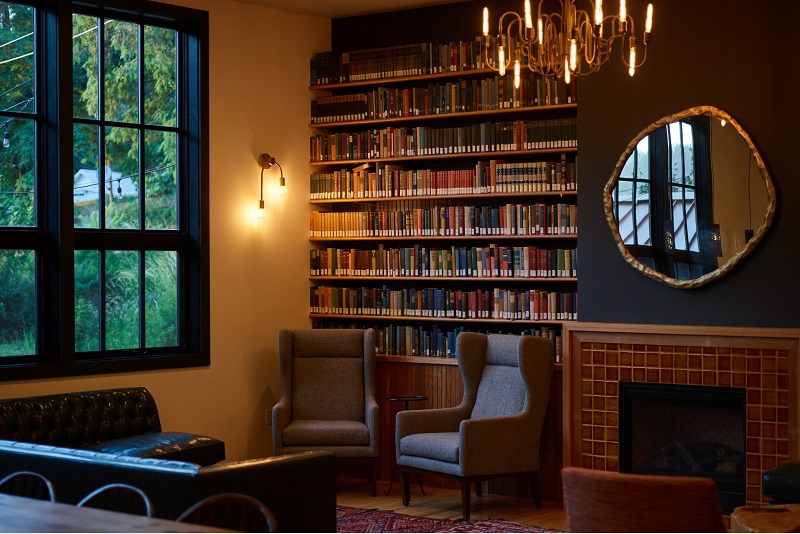
The tradition of creating intimate spaces over time is an intuitive design skill many Brits possess that enables the diverse pieces, colors and textures to coalesce.
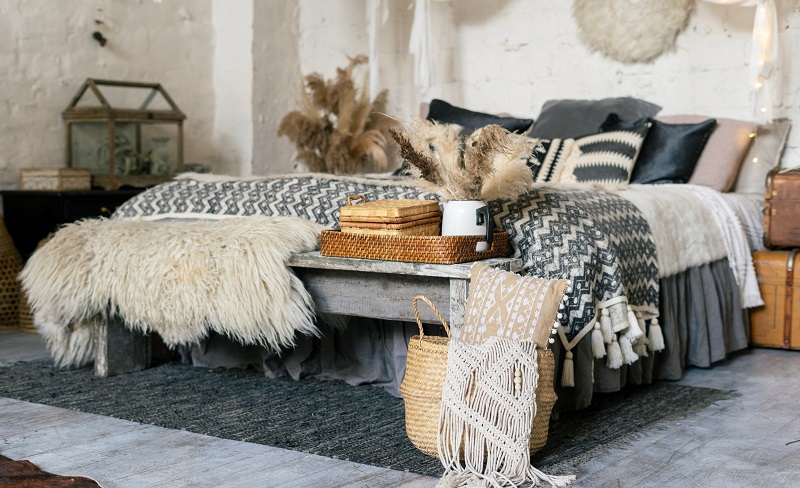
Also see:
UK vs. US Housing & Design Resources
- British vs American Houses: 19 Important Differences
- Comparison of British and American Housing
- What to Expect in Housing if Moving from the US to the UK
- Before You Move to England
- Behind the Style: Eccentric Decor
- Maverick Brits with Unique, Eccentric Homes
- The Complete Guide To Layering in Interior Design
- 4 Ways British and American Houses Are Very Different
English Interior Design Books
- English Eccentric: A celebration of imaginative, intriguing and truly stylish interiors
- Perfect English Style: Creating rooms that are comfortable, pleasing and timeless
This article was written with Elisha Adams, a guest contributor. Elisha is a freelance writer and digital content consultant based in London who covers emerging topics related to Sustainable Living.
More Recommended Interior Design Articles
- Why You Should Apply Cinematically Inspired Design to Your Home
- How to Apply Transformable Interior Design to Your Home
- Need Renovation Inspiration? Try These Innovative Design Resources!
- A Before vs. Virtual vs. Real Life Renovation Case Study
- These Features Will Make Your ADU More Desirable & Valuable
- 5 Inspired ADU Designs for Today’s Market
- Ornamental Design: Inspiration from Lenna Tyler Kast’s Villa Bel-Ami
- 5 Examples of Older Homes Returning Maximum Profit with Renovations
| Purgula is reader-supported. When you click on links to other sites from our website, we may earn affiliate commissions, at no cost to you. If you find our content to be helpful, this is an easy way for you to support our mission. Thanks! Learn more. |
>

